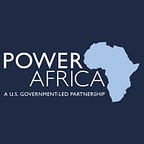Promoting Gender Smart Investing in Nigeria
In Nigeria, Power Africa is working with investors to share gender smart investing best practices to increase women’s access to energy services and boost equal participation in the sector.
In December 2021, Power Africa hosted a gender smart investing workshop to provide a framework and tools for off-grid clean energy financiers in Nigeria. The aim of the workshop was to equip funders and lenders with the tools to increase investments in women-led/owned energy access companies and encourage gender equality and social inclusion in the workforce and product and service design.
Through this workshop, Power Africa helped to close a critical knowledge gap and encourage financiers to apply a gender lens to future investments.
Power Africa presented three steps through which to incorporate gender equality into investment portfolios and put these best practices to action in an engaging case study.
A Three-Step Approach to Gender Smart Investing
This three-step approach to gender smart investing can be applied widely in the industry and adopted by investors at each step of the investment cycle, from the initial engagement to due diligence, negotiation, and management.
Additionally, companies seeking investments can integrate these considerations into investment opportunities to expand gender equality in their energy solutions.
Broadly, these steps are applicable beyond the energy sector and can be applied to sectors such as healthcare; agriculture; and water, sanitation, and hygiene services.
Step One: Integrate considerations for women as energy consumers
When sourcing and evaluating investments, think about energy products or services through the perspective of people of different genders and integrate these considerations to adapt or tailor offerings to expand or improve access.
Step Two: Increase the number of women in the energy sector value chain
Assess where gaps exist within the workforce of portfolio investments, implement training programs for portfolio companies, identify and scrutinize gender pay gaps, and integrate gender empowering human resource policies.
Our Gender Mainstreaming in the Solar Home System Value Chain report provides recommendations to better engage women across the different segments of the solar home systems value chain.
Step Three: Invest in women energy entrepreneurs, founders, and executives
Set portfolio goals for investing in women-led enterprises and take deliberate action to expand the number of women-led investments in a fund’s pipeline.
Through these steps, Power Africa helps investors adopt a gender smart investing approach that can make investments more sustainable, equitable, and effective.
Power Africa will continue to place gender equality at the center of our work, applying a gender lens to all of our activities and encouraging our ecosystem of stakeholders to do the same.
We invite you to access the following resources for more information and tools to integrate gender considerations into your investments and activities:
- Power Africa: Empowering and Powering Women
- Power Africa: Gender & Social Inclusion Checklist
- Power Africa: Case Study: Gender Smart Investing, Addressing the Gender Gap in the Off-Grid Energy Sector in Sub-Saharan Africa
- USAID Engendering Industries: Delivering Gender Equality: A Best Practices Framework for Increasing Gender Equality in Male-Dominated Industries
